In addition to creating low-power lighting options for humans, LEDs are further empowered to deliver information or data while being illuminated.
At present, most of the information data of products or exhibits are posted through QR Code or NFC tags, etc., and then through smart phones or products, after sensing and shooting to obtain relevant information, however, Like some art and architectural landscapes, it is very difficult to use QR Code or NFC tags, because it will not only affect the appearance, but also cause damage to the items. In fact, regardless of the application of QR Code or NFC tags, there are still some limitations. Therefore, LED components with long-distance propagation capabilities are beginning to be considered for application in the propagation of information.
In the past, when LEDs were developed as visible light wireless communication, most of them used the brightness (shading difference) of monochrome (white) LEDs, and the newly developed LED visible optical communication technology is different from the past. It is not only white LEDs, but more extensive use of LEDs of different colors (wavelengths), and in the case of indirect light (reflection) such as signboard lighting, display cabinets, etc., can also be correctly and quickly Pass a lot of messages.
1
Through LEDs and with smart components
Provide diversified information transfer
The Fujitsu Research Institute of Japan has developed a new-generation information transmission technology called "FlowSign Light", which is a two-dimensional code, through LED illumination and intelligent components.
If there is no special explanation, most people think that the picture is just a fairly common fresh fruit display cabinet, but when taking a fruit with a special APP mobile phone, they will receive the message from the LED, detailing the fruit cuisine. Or other relevant information (Figure 1).
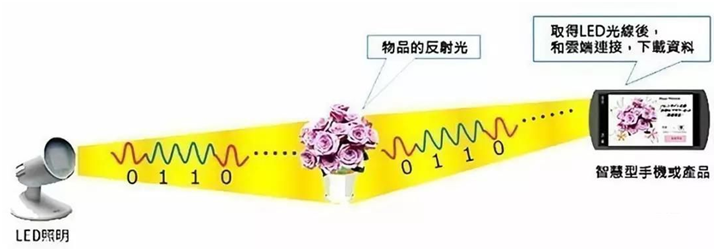
Figure 1: Viewing the phone towards the fruit, the information stored in the database in advance is transmitted to the phone through the LED. (source: Japan Fujitsu Research Institute)
This newly developed technology, when performing two-dimensional code reading, does not need to specifically focus the lens of the mobile phone on a specific point in the cabinet. It only needs to view the mobile phone toward the fruit, and the information stored in the database in advance is endless. It is transmitted to the mobile phone through the LED, and there is no need to use or add a special device machine. Simply download the dedicated APP to read the data transmitted from the cloud (Figure 2~4).
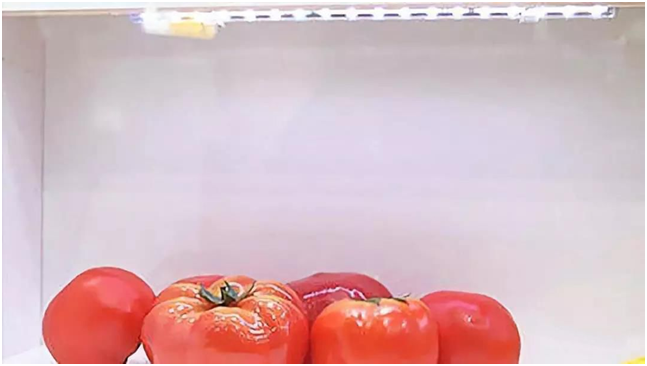
Figure 2: At first glance, this is just a fairly common fresh fruit display cabinet (source: Fujitsu Research Institute, Japan)

Figure 3: At this time, just hold the phone with the specific APP installed, and point the lens of the phone to the LED in the cabinet. (source: Japan Fujitsu Research Institute)

Figure 4: The screen of the phone immediately shows the cooking of fruits and vegetables or other related information. (source: Japan Fujitsu Research Institute)
2
Hide information in the light that is invisible to the human eye
In fact, the Fujitsu Research Institute of Japan uses the combination of LEDs and the different light colors to hide the information transmission process in the LEDs, and then receive them through the intelligent components, decode them and transmit them to the cloud.
Of course, the message provider needs to upload the relevant data to the cloud server in advance, and register the ID of the data. When the mobile phone is looking into the LED, the mobile phone will transmit the ID received from the LED back to the cloud, and The cloud request transmits the pre-existing data that has been registered in the cloud in advance, and then downloads it to the mobile phone through the network, and displays it on the screen to provide users with richer information (Fig. 5).
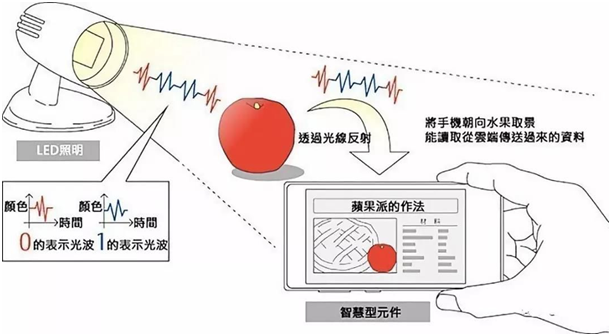
Figure 5: Using the instantaneous flashing of LEDs and the matching of different light colors, the information transmission process is hidden in the LEDs, and then received by the intelligent components, decoded and transmitted to the cloud. (source: Japan Fujitsu Research Institute)
While it may be considered easy to read the light from LED lighting, there are several technical issues that need to be clarified and overcome if you want to achieve data through light.
One of the problems in this is from the reflected light. The light received by the mobile phone or smart component is not entirely from the light emitted directly from the LED. A large part is from the reflection, so the reflected light There will be a considerable degree of change in color. For example, the light of an LED, after being irradiated to a red apple, the reflected light, most of the red light can be reflected, but for example, a short-wavelength blue light and a medium-wavelength green light are partially absorbed, and then the blue light and The intensity of the green light will be weakened, and the light quality of the reflected light and the light structure originally emitted from the LED will naturally change.
Furthermore, if the object of the reflector is a black object like charcoal, the amount of light that will be reflected will be weakened, because most of it will be absorbed and cannot be reflected. Therefore, if you want to achieve the correct and correct mobile phone or smart components, and correctly read out the reflected light, then the technical problems in this area must be overcome.
At this time, it is necessary to rely on the ability of the APP software to interpret and process the error of the received light. Of course, this must be tested and adjusted for a long time, and various items of different colors and materials are tested one by one. The error and accuracy adjustment with the APP makes the received reflected light not misjudged due to the influence of material and color (Fig. 6).

Figure 6: The APP software has to undergo a long period of experimentation and adjustment so that the received reflected light will not be misjudged due to the influence of material and color. (source: Japan Fujitsu Research Institute)
3
The APP that reads the light must be for the camera
Subtle control of various parameters
The technology developed by the Fujitsu Research Institute of Japan is characterized by the fact that it is only necessary to use a lighting LED and a camera that can take a picture, so that it can be widely applied anywhere, anytime.
In fact, there are quite a few types and technologies in terms of LEDs, and even some strict conditions can be applied to different environments or products.
For example, in terms of home lighting, a relatively high standard of illumination, color temperature or color rendering is pursued, but for the lighting LEDs required by "FlowSign Light", there is no need to give special consideration to these, only the use of red, blue and green colors. LED lighting fixtures, it is possible to apply this technology (Figure 7).

Figure 7: The ability to achieve built-in messages using the strength and weakness of red, blue and green. (source: Japan Fujitsu Research Institute)
In addition, in the APP part, in order to achieve the light of the built-in information for a general smart phone or product, and the goal that allows the user to use it fairly easily. The APP that reads the light must have fine-grained control over the various parameters of the camera, including resolution and color difference, so that different brands of cameras or mobile phones can successfully receive the light with built-in information without Produce inconsistent results.
At the same time, because it is to be widely used, it is not only the adjustment of the latest mobile phone models, even the old models must be taken into account, in addition, for those who can not use smart phones or products, must also Develop dedicated reading devices.
4
Fujitsu will "FlowSign Light" technology
Application shopping mall
According to the Fujitsu Institute of Japan, this LED is not only the ID information. Through such technology, for example, when shooting a TV shopping product, when thinking about "I want to buy this product" or "This music." When you are in awesome, you will receive product information and online shopping from the screen of smart components or mobile phones.
Furthermore, you can also use the technology to continue to connect to the product's website on the screen when you watch the advertisement, and learn more data or special promotion information of the product.
Therefore, "FlowSign Light" can be used not only in the above-mentioned environment, including museums, art galleries, etc., but also to use this technology to allow visitors or more to display item information. In the event, you can also use the LED lighting equipment in each environment to let the participants who want to participate know the sings of the performances, purchase tickets, etc. through smart products such as mobile phones.
Through the technology of "FlowSign Light", various kinds of information are transmitted through light, and it has been officially commercialized.
In mid-2017, Fujitsu and BEAMS collaborated to apply the “FlowSign Light†technology to the BEAMS shopping mall (Figure 8). In the mall, Fujitsu filmed ASCON's products and made a frame of photo frames. When consumers enter the BEAS shopping mall and go to the ASCON product booth, they can take photos through mobile phones or smart components to get products. Various messages.
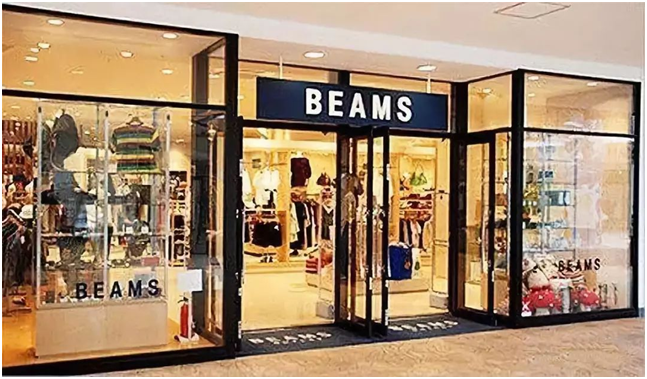
Figure 8: After entering the BEAMS, consumers can capture the ASCON product photo frame via mobile phone or smart component to get the product information. (source: Fujitsu, Japan)
In museums, exhibition halls, art galleries, etc., if this technology is adopted in the future, the display and viewing methods of the exhibits will change.
If you are holding a smart phone or product on your hands, you can use this technology to connect to the cloud through the network after shooting the exhibits under LED lighting, and then you can download the details of the exhibits that are pre-transmitted to the cloud. Instructions, even movies, etc. (Figure 9).
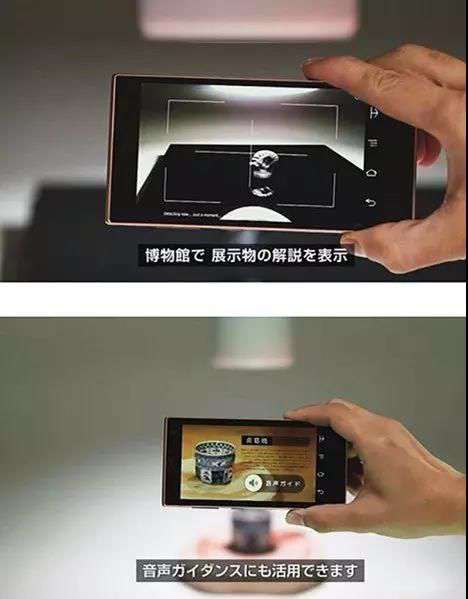
Figure 9: After shooting the exhibit under LED lighting, you can download a detailed description of the exhibits that were previously transmitted to the cloud. (Top) In the museum application, the introduction description (below) that can display the displayed items can also be applied to the audio guide. (source: Fujitsu, Japan)
5
Japan Panasonic develops "light ID" technology
It is enough to build a bridge of communication with APP software.
As the content of advertising information that the outdoor and storefronts expect to provide to consumers continues to increase, the market for electronic billboards is gradually expecting the emergence of an overall solution for the publication, management, and the like of highly efficient advertising information. Coupled with the popularity of smart phones, information-transfer operators rely on smart phones to reach potential customers, and the need to spread information has expanded.
Therefore, how to make good use of display devices and smart phones to spread more diversified and richer information to potential customers has become one of the focuses of display devices.
Japan's Panasonic is also using LED's special ability to develop LED communication technology called "light ID".
Panasonic uses the high-frequency LED dot-out method that the human eye can't detect, and hides the data that is expected to be transmitted to the smart phone. As long as the dedicated APP software is installed through the smart phone, only the APP software can establish the "light ID". A bridge between the sending device (electronic billboard screen, LED captioning machine, LED billboard, etc.) and the mobile phone allows the mobile phone to successfully receive the signal from the "light ID" transmitting device (Fig. 10).
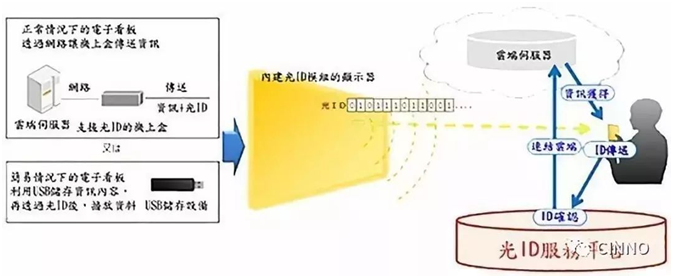
Figure 10: Japan's Panasonic is also making good use of LED's special ability to develop an LED communication technology called "Light ID". (source: Panasonic)
6
Apply "light ID" technology to the backlight module of LCD TV
In addition, PANASONIC has further applied this technology to the backlight module of LCD TVs, and developed an "optical ID" LED backlight module that can also perform high-frequency dot-off and transmit special signals.
Through this technology, more and more kinds of electronic billboards, in addition to the information displayed on the screen, have the ability to transmit more data after connecting a smart phone, which also expands the electronic advertisement. Brand applications and environments, including, for example, the logistics industry, the transportation sector, as well as museums, exhibition venues, etc.
The display screen using this technology not only needs to use the LED backlight module with "light ID" capability, but also needs a special set-top box (STB; Set Top Box) for transmitting information, in addition to the display screen. At the same time, the special signal can be transmitted through the LED backlight module with "light ID" capability to the smart phone with dedicated APP software. It is also possible to cut the LED backlight block and let the LED backlight module simultaneously transmit multiple sets of different messages to the "light ID" receiving device of the smart phone or the like.
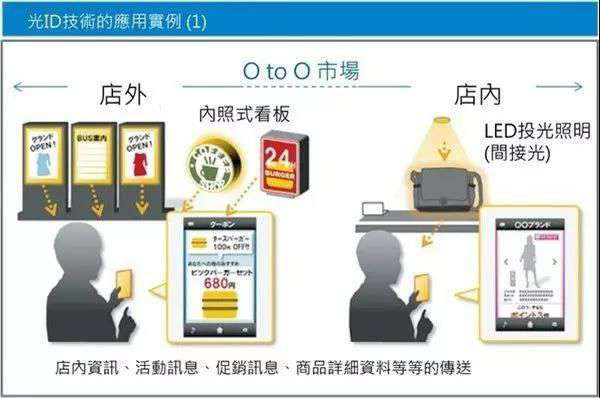
Figure 11: Light ID Technology Usage Case (1) (source: Panasonic)
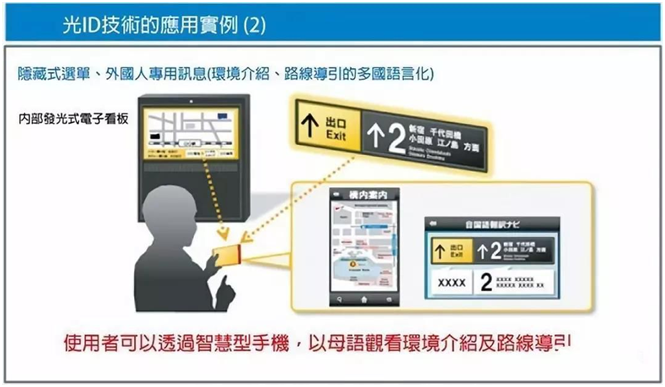
Figure 12: Light ID Technology Usage Case (1) (source: Panasonic)
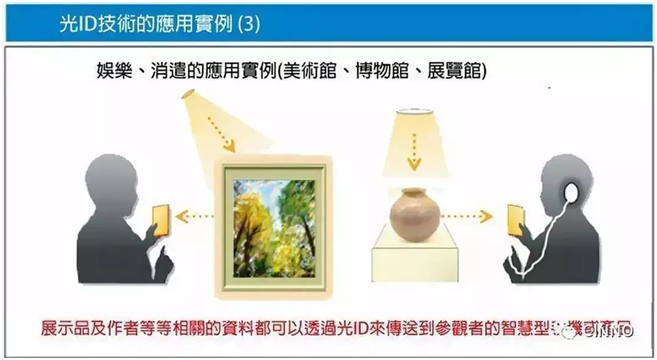
Figure 13: Light ID Technology Usage Case (3) (source: Panasonic)
In addition, some buildings with historical or visiting value can also use the outdoor LED lighting to build the ID, so that when the visitors shoot the building, they can also receive the description of the building, as well as the historical background information or film. Wait.
Through the popular LED lighting fixtures, it is very easy to make full use of the "FlowSign Light" technology, and the scope of the application is even wider. If you can further research and development, I believe that through the technology of "LED communication", not only the store's products, art, people, buildings, etc. can communicate directly through the network for business or cultural activities. And it is more able to use the technology of the cloud to make the delivery of "content" more convenient. I believe that such a future should come soon.
Editor: Liang Jieying
Here you can find the related products in Pop-up Greeting cards, we are professional manufacturer of Pop-Up Greeting Cards, Pop-Up Music greeting card, Pop-Up Musical Cards. We focused on international export product development, production and sales. We have improved quality control processes of Pop-up Greeting cards to ensure each export qualified product.
If you want to know more about the products in Pop-up Greeting cards, please click the product details to view parameters, models, pictures, prices and other information about Pop-Up Greeting Cards, Pop-Up Music Greeting Card, Pop-Up Musical Cards.
Whatever you are a group or individual, we will do our best to provide you with accurate and comprehensive message about Pop-up Greeting cards!
Pop-Up Greeting Cards, Pop-Up Music Greeting Card, Pop-Up Musical Cards
AST Industry Co.,LTD , https://www.astsoundchip.com